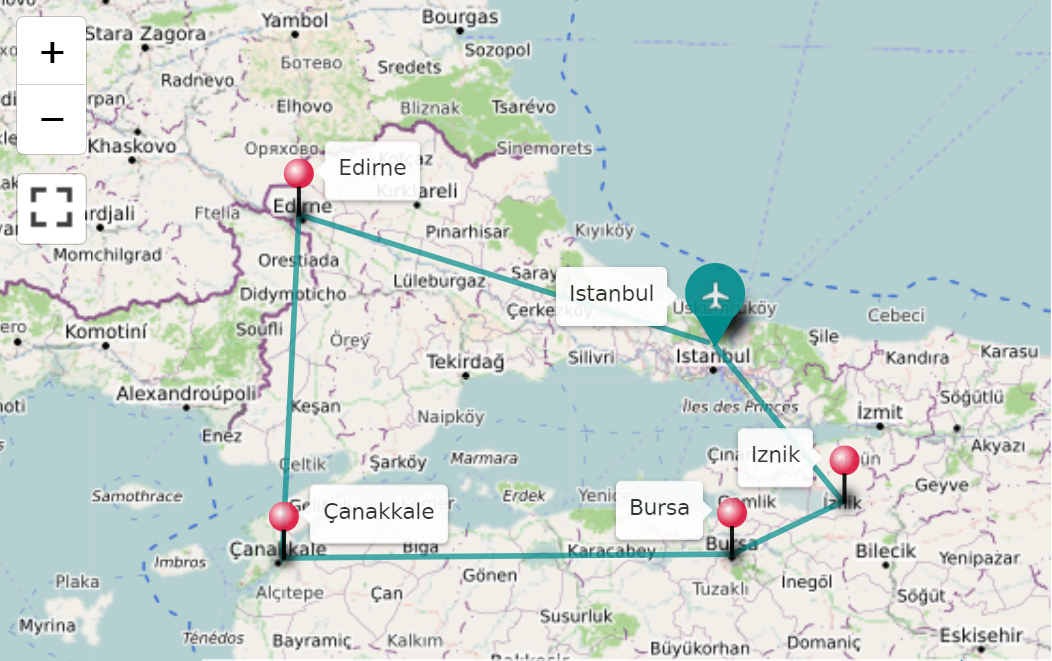THE JEWELS OF OTTOMAN EMPIRE - 14 DAYS / 13 NIGHTS
From Antalya Tailor-made trip - 14 days / 13 nights - Flights + hotels + excursions + transfers ------> Bursa, Edirne then Istanbul were in turn capitals of the Ottoman Empire. In Bursa and Edirne, full of traditional charm, time seems to have stood still. Istanbul, vibrant and cosmopolitan, pursues its destiny as a flagship city between East and West. More information in the description below.
- Category: DAİLY EXCURSİONS & PACKAGES TOUR TURKEY
- Service Length: 1 Minutes
- Price:Free
Description
From Antalya
Tailor-made trip - 14 days / 13 nights - Flights + hotels + excursions + transfers
Day 1: Departure for ANTALYA / ISTANBUL
At the end of the day flight to Istanbul, transfer to hotel, installation in the rooms.
Free time and overnight at the hotel
Day 2 : ISTANBUL
Breakfast at the hotel
On the shores of the Bosphorus, straddling two continents, Istanbul is home to an exceptional heritage that testifies to an extraordinary history: it begins when the Greek port of Byzantium was promoted, under the name of Constantinople, to the rank of capital of the Empire Eastern Roman, before becoming, with the fall of Rome, that of the Byzantine Empire, then in 1453, that of the Ottomans.
Day dedicated to the historic heart of the city of the basileus and the sultans, between the Sea of Marmara and the Golden Horn, which has been the dream of the West and the East for centuries :
- The basilica cistern, a spectacular achievement dating from the reign of Constantine (4th century) whose vault is supported by a forest of Corinthian columns;
- The Topkapi Seraglio with Harem included : home of the sultans and seat of power for four centuries, this immense palace built on the acropolis of ancient Byzantium is now a museum.
- Hagia Sophia (6th century), astonishing architectural feat whose dome was the unequaled model of Ottoman architects;
- The Blue Mosque clad in Iznik tiles;
- The remains of the hippodrome and its three obelisks;
- Free time and overnight at the hotel
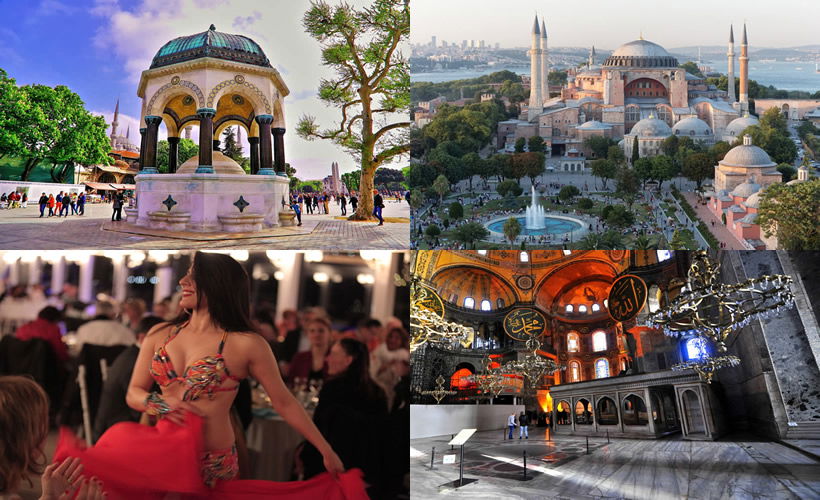
Day 3 : ISTANBUL
Breakfast at the hotel
Let's start with a work of art:
-Saint-Sauveur-in-Chora (Turkish: Kariye Müzesi, Kariye Kilisesi or Kariye Camii either "museum of the Chora", "church of the Chora" or "mosque of the Chora") is a of the finest examples of Byzantine churches.
Discover the old church of Saint-Sauveur in Chora, built in the 12th century: it houses the one of the most beautiful sets of mosaics with a gold background in the Byzantine world.
Fatih district
Fatih mosque and mausoleum of Fatih Mehmed `` the conqueror '
District Süleymaniye
Mosque of Suleyman the Magnificent, a masterful demonstration of the art of the architect Sinan, inspired by the central plan of Hagia Sophia.
Mausoleum of the architect Sinan (Architect of important monuments in Turkey)
Small coffee-tea break on a terrace overlooking Istanbul
The Grand Bazaar
Then,The fabulous Grand Bazaar, which has a few 4,000 shops, fountains, mosques, caravanserai, restaurants and cafes spread along the covered alleys of this resolutely oriental labyrinth.
- For finish the day, Free Time or OPTIONAL : Cruise along the Bosphorus, an opportunity to contemplate the delicate yali of the nobles and rich merchants ...
overnight at the hotel

Day 4 : ISTANBUL
breakfast at the hotel
Last day of our discovery of Istanbul where we visited magical monuments between East and West.
Let's find out about the last day:
- Dolmabahçe Palace (Haremlik and Selamlık)
Last home of the last sultans and caliph of Islam and Atatürk Mustafa Kemal
- Ortaköy Mosque
(Famous place for Turkish television series and for its potato-based restaurant Kumpir)
- Underground Mosque
The maqam tombs of Amr bin al-As of the companions, Vehb B. Huşeyre (there is no information as to whether he is a companion) and Süfyân B. Uyeyne of Tebeu't-tabiîn are also here. It is considered the most visited holy place in Istanbul after Eyüpsultan.
'' Free Time or OPTIONAL : After a beautifuls days of sightseeing, a little rest in a hamam to relax and Go Taksim square and the famous istiklal street walk past the Galata Tower ''
Two possibilities: HAMAM MİXTES OR SEPARATE
Enjoy a session in a Turkish bath (hammam) and discover a traditional method of purification and relaxation.
Relax in the sauna and steam baths and regenerate your skin with a scrub and foam massage. Experience the benefits of a full body oil massage, foam massage and skin scrub. Enjoy one of the most unique Turkish traditions.
sauna
vapor bath
foam massage
oil massage
overnight at the hotel
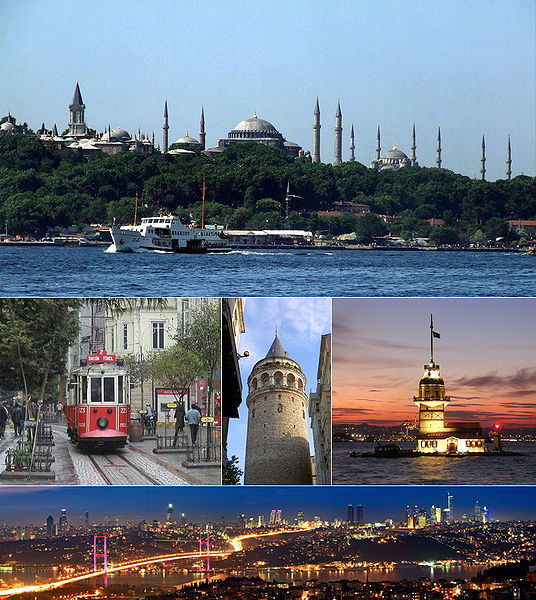
Day 5: ISTANBUL / IZNIK / CUMALIKIZIK / BURSA
breakfast at the hotel
Crossing the Sea of Marmara by ferry and drive to Iznik, first step after Istanbul.
Iznik Lake
The first part of the tour is not a stop but Lake Iznik, which will visually satisfy you at least as much as the rest of the tour. You will pass near Lake Iznik by bus and wonderful panoramic views will accompany your soul. This epic lake is 32 kilometers long and 10 kilometers wide and around 80 meters deep. The town of Iznik (formerly Nicea) is located on the east coast.
During a helicopter flight over the area in 2014, a Byzantine basilica was detected in the water just 20 m from the shore. Dating from the 4th century, the earthquake which took place in 740 would have caused its engulfing. An underwater museum is under construction so that visitors can soon enjoy it.
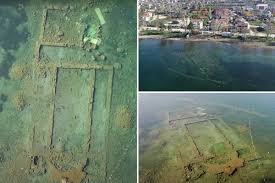
We start our day of sightseeing,
We will go to Yeşil Mosque, it has only one minaret since 1331 and is known as Bright Colors all over the country. The reason for this is the craftsmanship and the stones inside the mosque. Turquoise tiles have retained their shine over the years. The mosque welcomes us with its intricate and elegant decoration of multi-domed roofs and interior walls. The Green Mosque, erected north of Hagia Sophia, is one of the other places appreciated in İznik by visitors, in particular for its admirable minaret decorated with glazed green tiles, ancestors of the earthenware for which the city is famous.
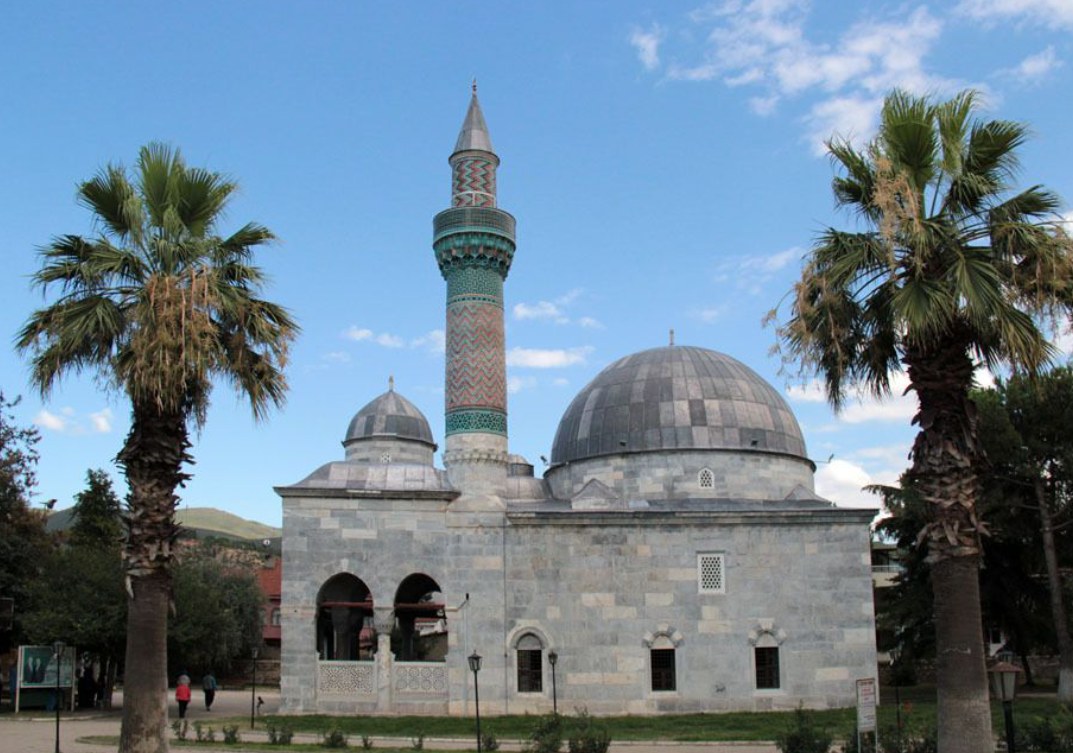
Iznik Castle
Before leaving for Iznik Castle, we will have lunch. After the meal, we will drive to Iznik Castle. This architectural structure, which you cannot believe even if you look at it from a bird's eye view, belongs to 258 BC. It has a very nice panoramic view. Please try not to discharge your phones and cameras until you reach this castle.
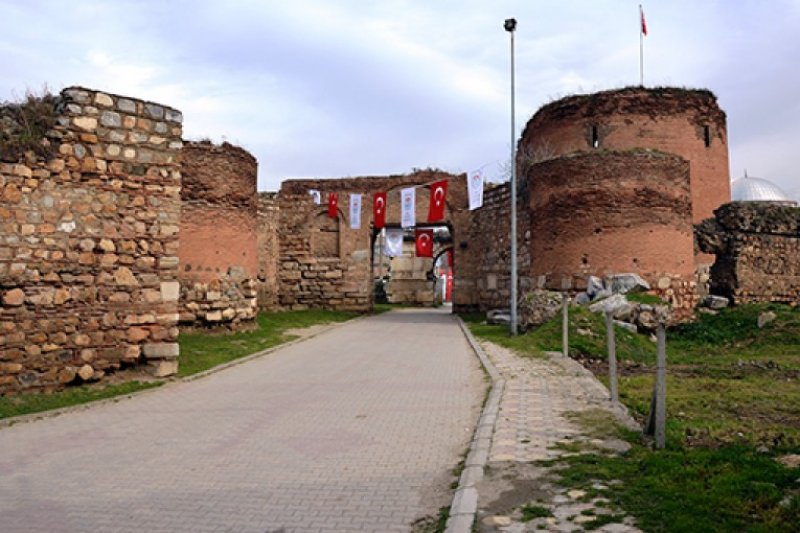
Ayasophia Church - Mosque
Then we go to Ayasophia Church/Mosque. This church is a building which witnessed extraordinary events in the middle of the 6th century. Sultan Orhan Gazi transformed the church into a mosque in 1331 after conquering the city. In the 16th century, the famous Ottoman architect Sinan was commissioned by Suleiman the Magnificent to restore it after a fire. A more imposing mihrab is then put in place, a minaret added ... and part of the aforementioned columns removed.
The building was destroyed in 1920 during the War of Independence and left abandoned. The Foundations Directorate of the nearby town of Bursa, on which it depends, decided in 2007 to carry out new rehabilitation works, including that of the minaret which was demolished in the meantime. After a few years as a museum, the Hagia Sophia Mosque reopened its doors to worship on November 6, 2011.
Inside, there are visible traces of the original church, in this case pretty mosaics which partially cover the floor as well as bits of frescoes, some protected behind glass, others under the dome.
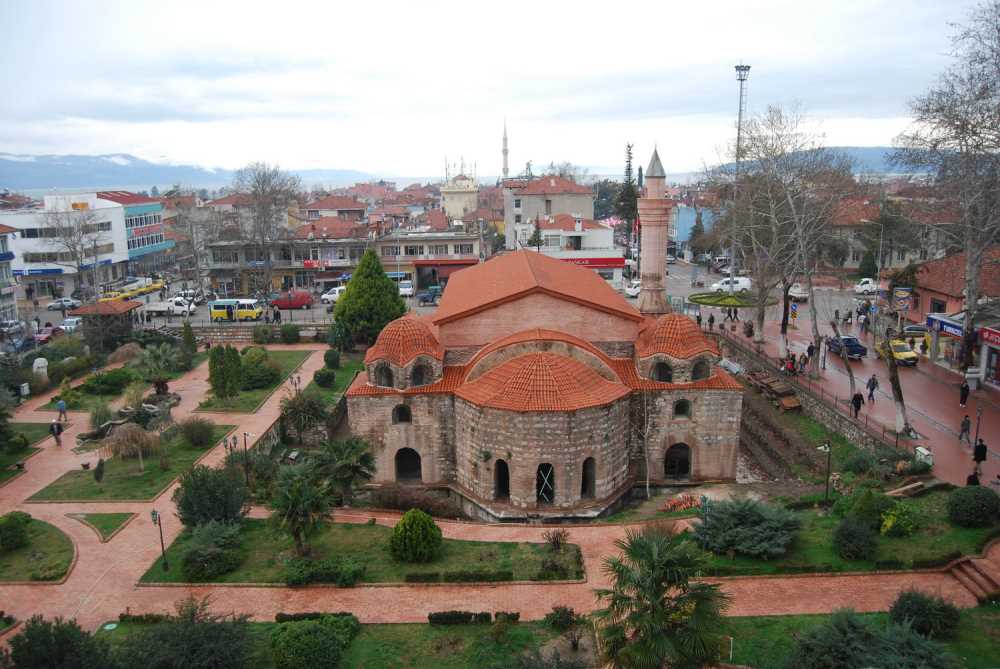
Departure for Bursa, Arrival at the hotel.
Free time and overnight at the hotel
Day 6: CUMALIKIZIK / BURSA
Breakfast at the hotel
CUMALIKIZIK
Bursa and Cumalıkızık: The Birth of the Ottoman Empire.
Cumalikizik (Ottoman Village) is a neighborhood of Turkey's Bursa province. It is 11 kilometers from Bursa city center. It is one of the five Kızık villages established on the northern of Uludağ . Cumalıkızık Ethnography Museum is located here. Cumalıkızık was registered in 2014 as a World Heritage Site.

Emir Sultan Mosque and mausoleum
Who is Emir Sultan?
Emir Sultan, who lived in Bursa during the period of Ottoman settlement, is a well-known thinker in the world of Islam and Sufism.
He was born in Bukhara and died in Bursa. His lineage is based on Hussein, the grandson of the Prophet Muhammed. He is a descendant of the prophet.
His name is Muhammed bin Ali and his nickname is Şemsüddîn. He was called "Muhammed Buhârî" because he was born in Bukhara, "Emîr Buhârî" because he was a Sayyid, and "Emîr Sultan" after having married the daughter of Sultan Yıldırım Bayezid (4th sultan).
He immigrated to Bursa in 1391 and married Hundi Fatma Hatun, daughter of Yıldırım Bayezid. He died in Bursa in 1430. His tomb is next to the Emir Sultan Mosque.
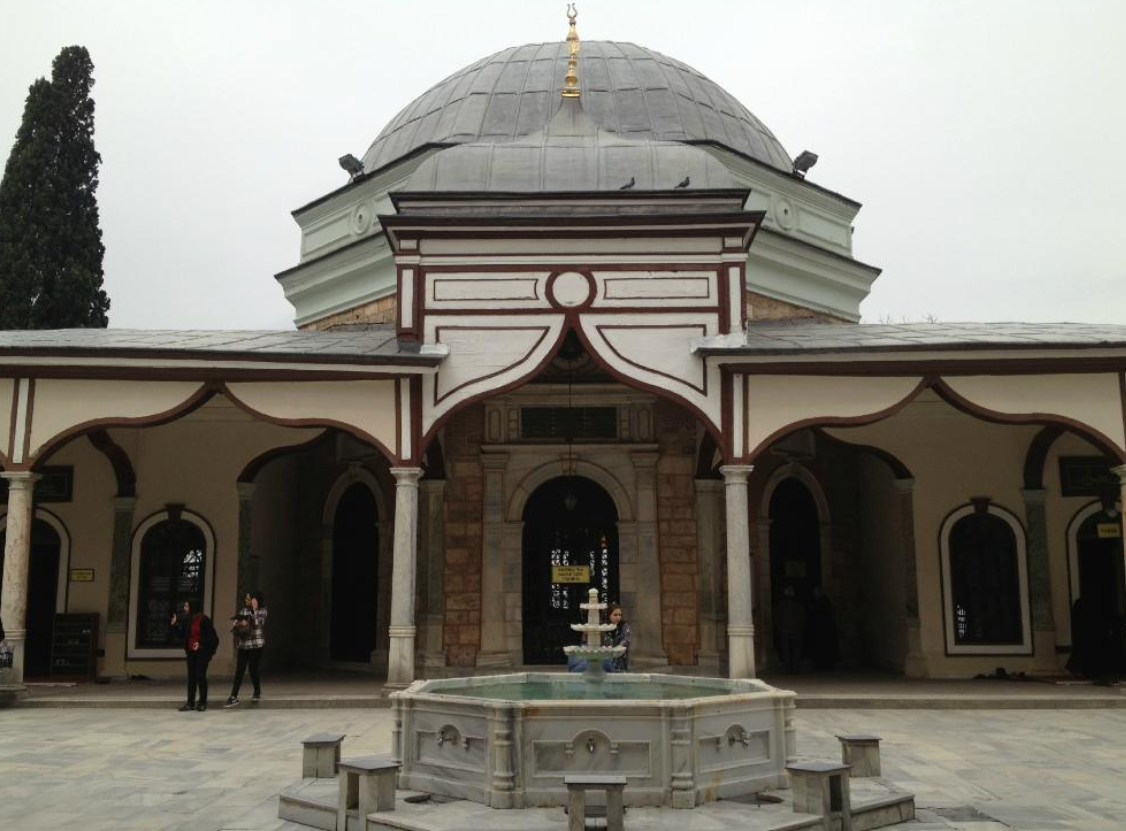
Bursa cable car
Before leaving for the Bursa cable car, we will have lunch next to the Emir Sultan Mosque. After the meal, we will head to the Bursa cable car to enjoy a moment of relaxation and a panoramic view of the city and the mountain of Uludağ, famous for its ski resorts.
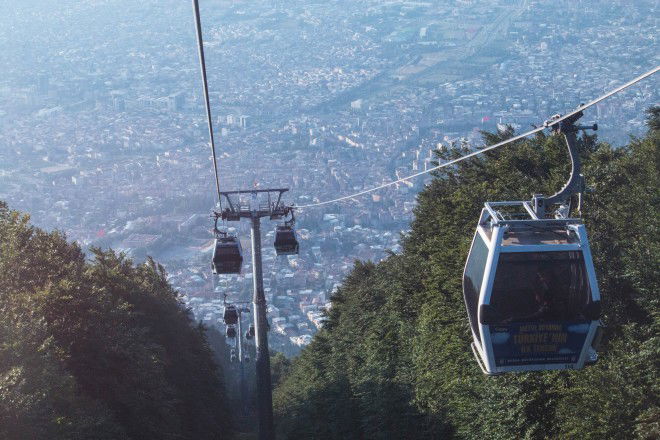
Free time and overnight at the hotel
Day 7 : BURSA / GÖLYAZI
Breakfast at the hotel
Bursa, founded in the 3rd century BC by Prusias I, King of Bithynia.
Conquered in 1326 by Sultan Orhan Gazi, who made it the first capital of the Ottoman Empire, Bursa was embellished with monuments that mark the emergence of a new Turkish architecture merging Persian, Seljuk and Byzantine influences, a heritage to which s' adds the quiet charm of the province and the opportunity to learn about the oriental art of living.
Osman Gazi and Orhan Gazi
Visit of the mausoleums and mosques of the first sultans and founder of the Ottoman Empire.
Osman Gazi, the founder of the Ottoman Principality and the Ottoman dynasty and the first sultan of the principality and his father is Ertuğrul Bey, the leader of the Kayı tribe of the Oghuz in the mid-13th century.
Orhan Gazi, the second sultan of the Ottoman Empire. He was sultan of the empire between 1326 and 1359.
The Great Mosque of Bursa or Bursa Ulu Camii
It was erected by order of the Ottoman Sultan Bayezid I between 1396 and 1399. It has twenty domes and two minarets.
Ulu Camii is the largest mosque in Bursa, it is considered one of the best examples of early Ottoman architecture, which used many elements related to Seljuk architecture.

Walk in the covered market and in the Koza Han
Currently the han are places of commerce. In time The caravanserai or HAN is a building that welcomes merchants and pilgrims along the roads and in the cities. A caravanserai is always fortified, and includes both stables (or enclosures) for mounts and beasts of burden, stores for goods and rooms for passing people. Often the shops are on the ground floor and the bedrooms are on the first floor. It is also a place of exchange frequented by many foreigners and travelers.
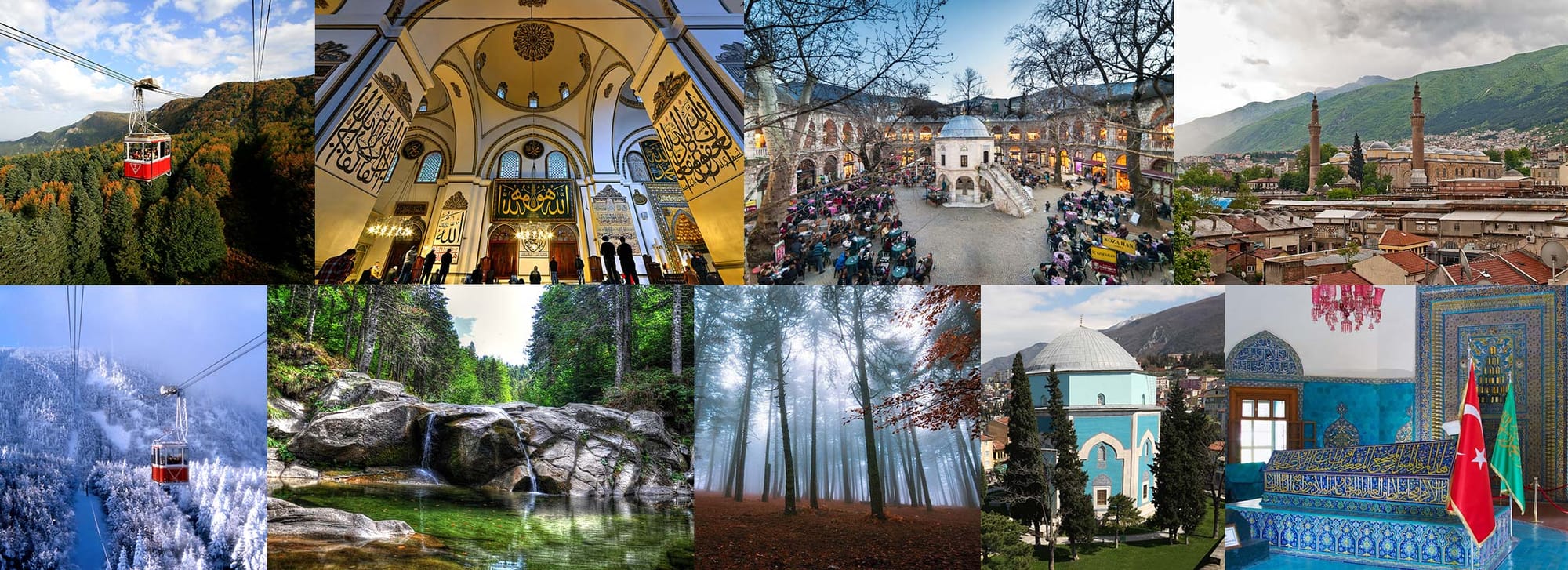
Departure for Gölyazı
Gölyazı is a Turkish city founded on a small peninsula on Lake Uluabat.
Free time on the almost island and Night at the hotel
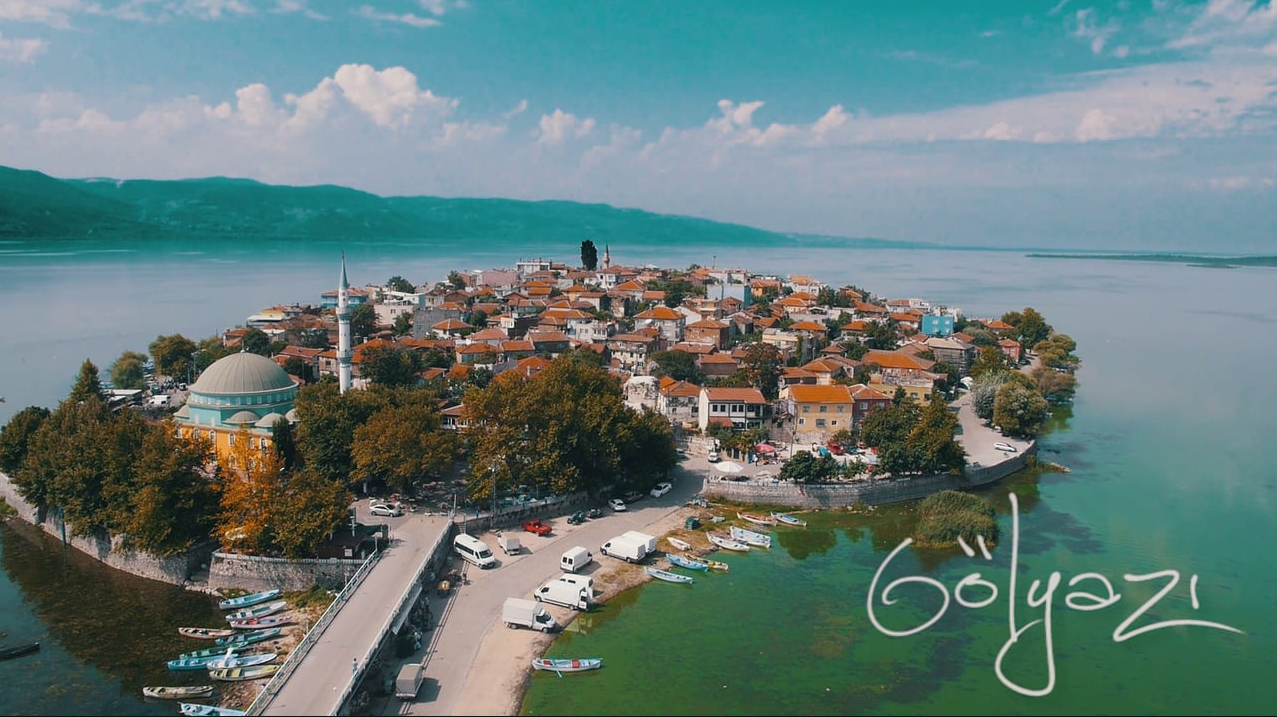
Day 8 : GÖLYAZI / ANTANDROS / ASSOS
Breakfast at the hotel
Departure for the rest of our discoveries
ANTANDROS :
Antandros is located in the Edremit district 2 km from Altınoluk District. It is an important city of Troas, located at a distance. The ancient city famous for its mosaics near Altınoluk town. It is located on the western slopes of Kaletaşı hill.
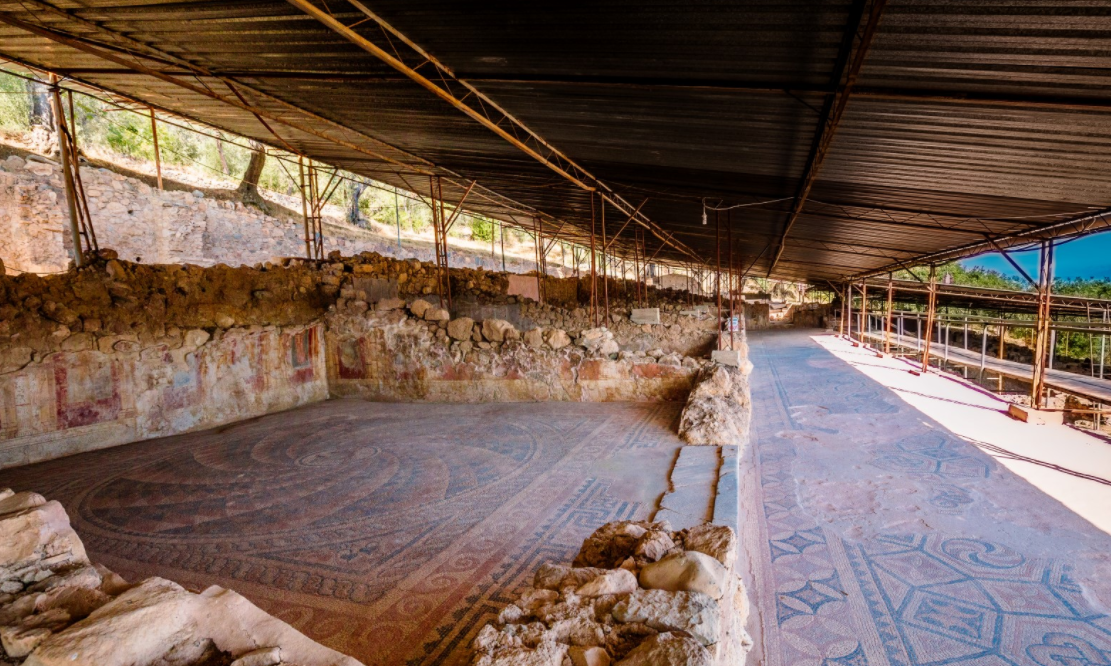
Archaeological finds in the city 7-8 BC. It dates back to the century. Some of the finds are exhibited in Bursa Archeology Museum. During the excavations, a villa decorated with mosaics belonging to the Roman period, a sewer network and many sarcophagi were found. The city especially was exporting the timber obtained from Kaz Mountain and it got rich in this way. Aphrodite cult is dominant in the city.
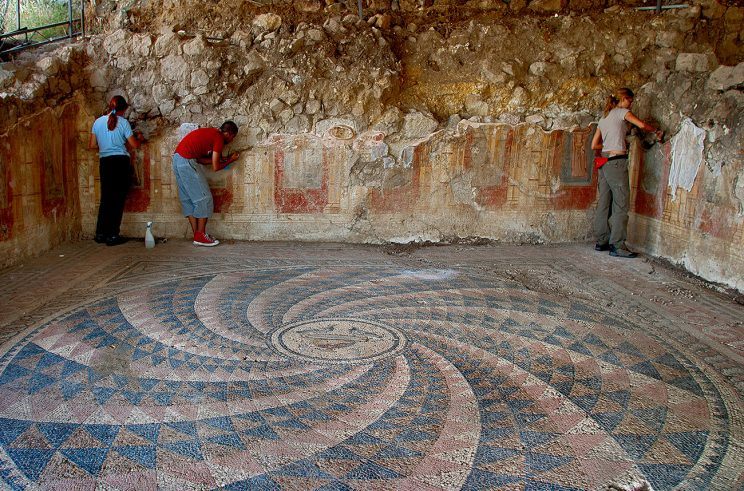
The name Antandros is also mentioned during the Troia war. Aeneas, who also participated in the Troia war, came to Antandros with the people who survived the destruction when Troia collapsed, built 20 ships and sailed. In addition, the city of Antandros was occupied for a while by the Cimmerians, who came from the north and known as the people of the Barbarian Konan, as Strabon stated.

BEHRAMKALE :
the ancient Aeolian city of Assos in a remarkable setting overlooking the Aegean Sea and the coast of the ancient Troad, facing the Greek island of Lesvos: visit of the temple of Athena at the top of the acropolis, then stroll through the village shaded by secular plane trees.

The old town of Assos is a port city founded by the Methymnians and the Aiols.
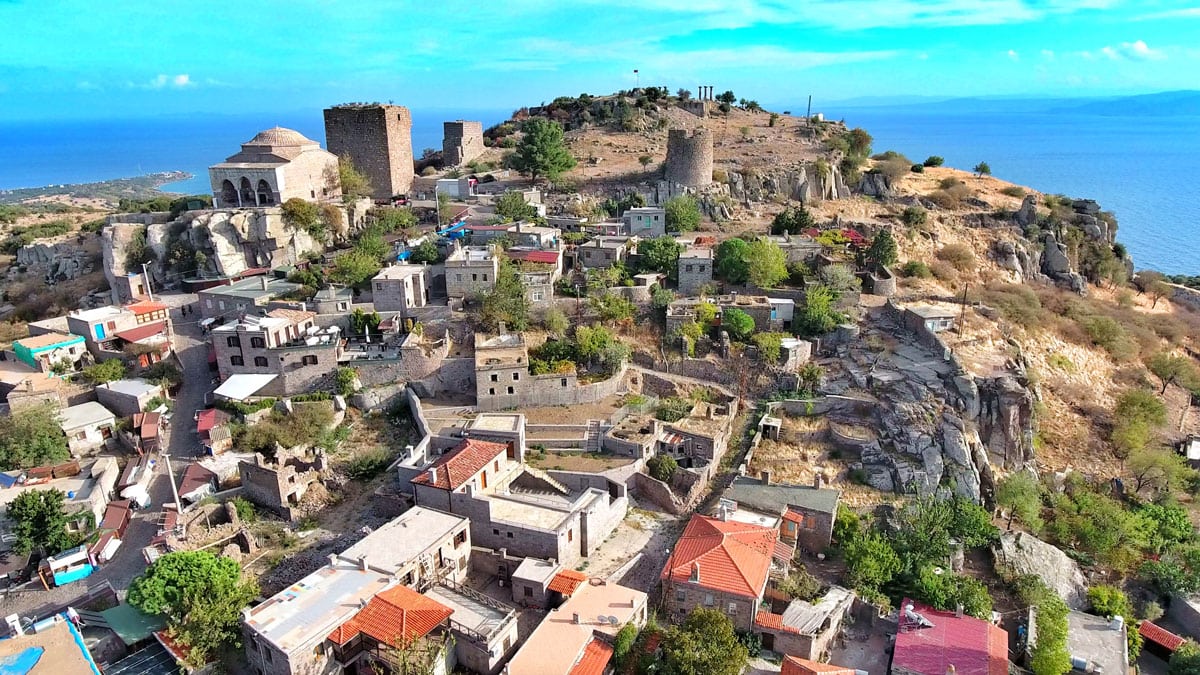
Assos is notably known for the philosopher Aristotle. He lived in Assos between 347 and 344, founded a school of philosophy and got married there. Today, Assos is an important place for philosophers, it also hosts meetings of philosophy.

Free time and overnight at the hotel
Day 9 : ASSOS / TROY / ÇANAKKALE
Breakfast at the hotel
Next, stop at the archaeological site of Troy, immortalized by Homer, before arriving in Çanakkale, a small port on the Asian side of the Dardanelles Strait, the scene of violent battles during the First World War.
Troy is one of the most famous ancient cities in the world. The 9 layers seen in Troy show uninterrupted time of more than 3000 years and allow us to follow the civilizations settled in this unique geography where Anatolia, the Aegean Sea and the Balkans meet. The first layer of settlement at Troy, British Columbia. It is dated to the early Bronze Age with 3000-2500, then the layers of Troy, which have been permanently inhabited, are from British Columbia. 85 - M.S. It ends with the Roman period, dated to the 8th century.
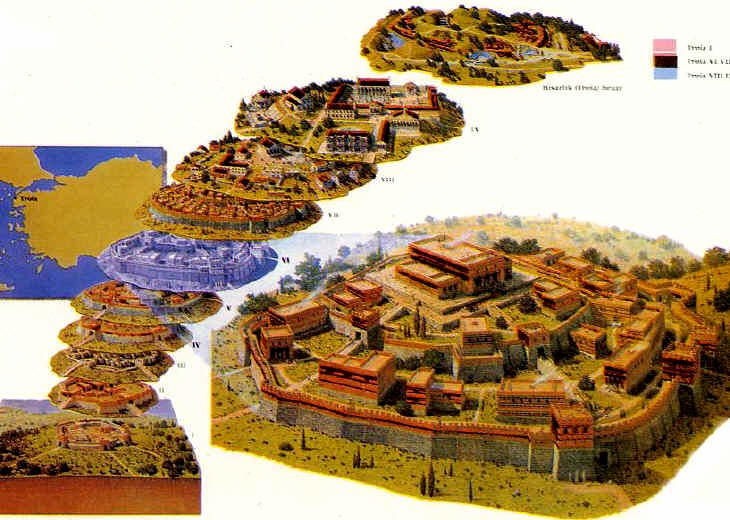
Due to its geographical location, Troy has always played a very important role in terms of the commercial and cultural ties of the civilizations that ruled here with other regions. Troy also serves as a benchmark for other archaeological sites in Europe and the Aegean Sea with its continuous stratification. Excavations are still continuing in this magnificent archaeological city, which was first excavated in 1871

Arrival Çanakkale
Visit of the `` Trojan Horse '' Square
In Greek mythology, the episode of the Trojan horse is a decisive event in the Trojan War. At the initiative of Odysseus, Greek warriors succeed in penetrating Troy, besieged in vain for ten years, by hiding in a large wooden horse, harnessed in gold, offered to the Trojans.
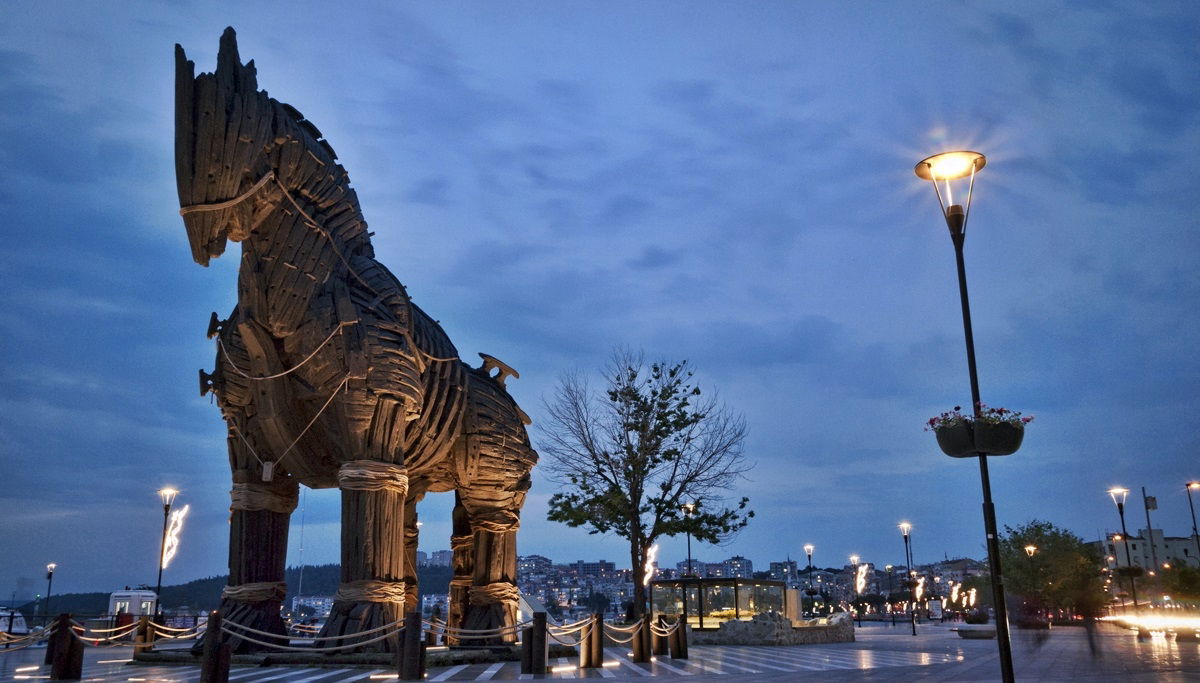
Crossing the Dardanelles strait by ferry
Free time and overnight at the hotel in Çanakkale
Day 10 : ÇANAKKALE
Breakfast at the hotel
Çanakkale, a small port on the Asian side of the Dardanelles Strait, the scene of violent battles during the First World War.
Visit Namazgah bastion Museum
Namazgah Bastion appeared during the reign of Sultan Abdul-Aziz and then had the name Roumeli Aziziye. This place gained its present glory during the First World War. Here the Turkish soldiers held Friday prayers before the decisive battle.
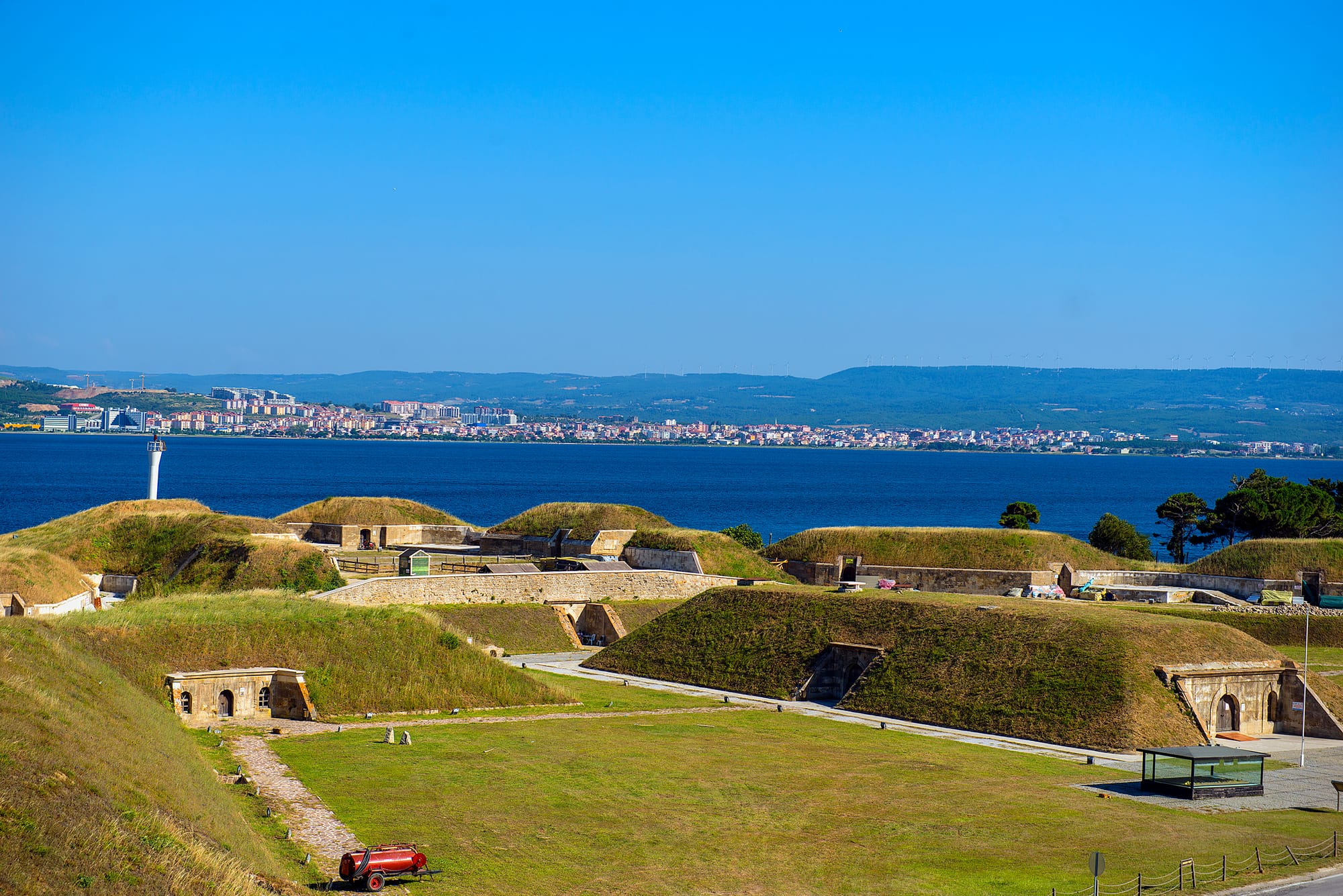
During the battle of Canakkale, the bastion became one of the most important defensive points of the Dardanelles. In the center of the bastion, there were 2 artillery regiments and 16 coastal guns. Of these, 14 were melee cannons, and two were used as anti-aircraft guns of that period.
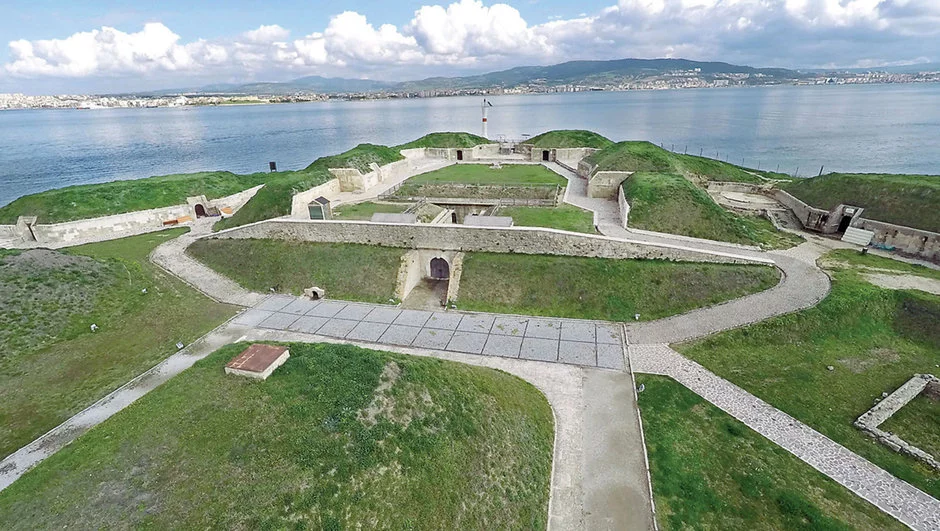
Rumeli Mecidiye Bastion
The bastion in Gallipoli Peninsula of Çanakkale. The bastion built by Asaf Pasha to the south of Kilitbahir Castle in 1892; 8 bonetten and German made 4 pieces of 24 cm. Consists of 2 28 cm diameter balls. Captain Hilmi (Şanlıtop) was the commander of the Battle of Çanakkale.
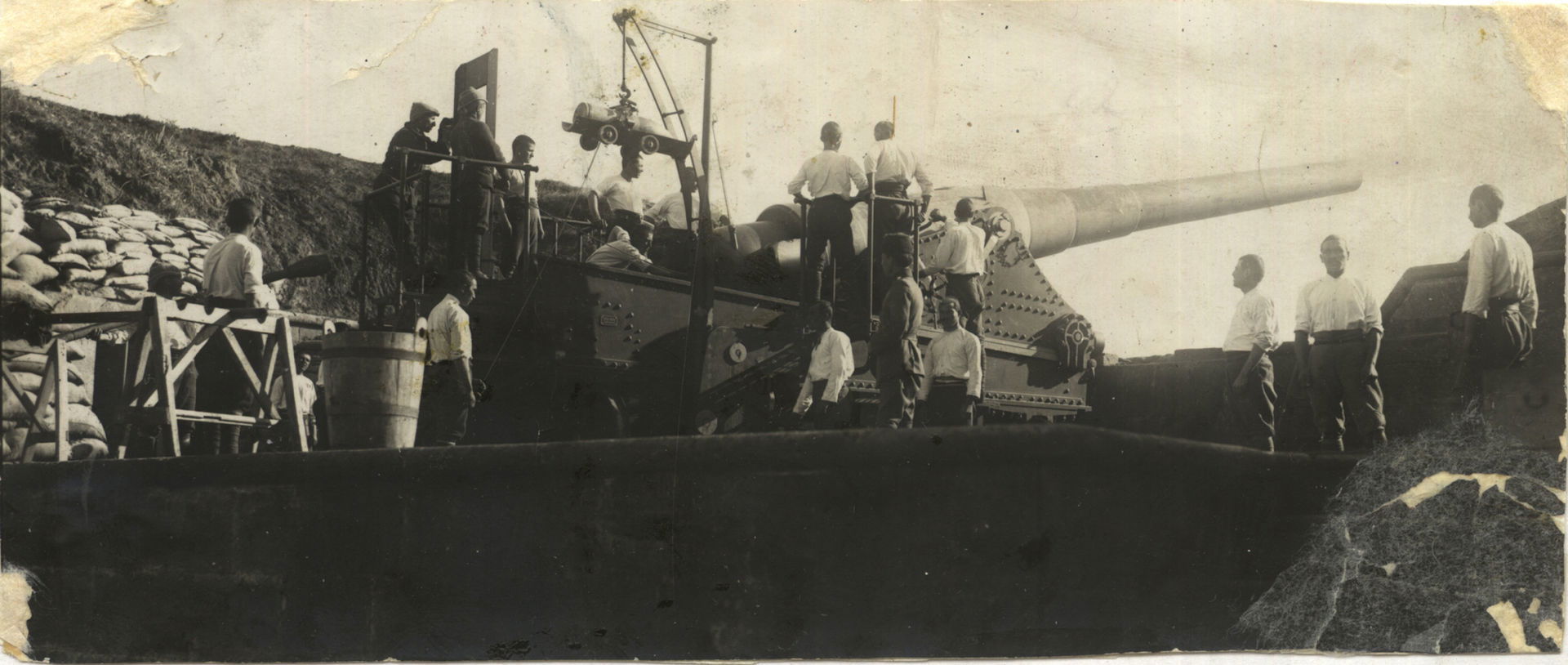
In addition, this bastion is the one where Seyit Corporal lifted a 190 to 215 kilogram bullet.
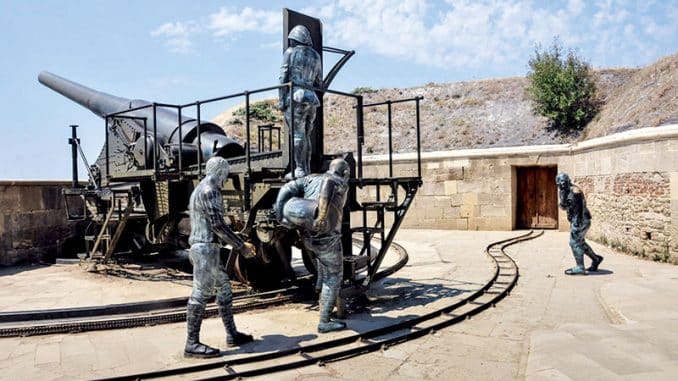
Seyit Corporal Monument
Seyit Ali Çabuk or Seyit Ali Onbaşı (September 1889 - 1939), a Turkish soldier who fought in the Çanakkale Front during the First World War.
He joined the Ottoman Army in 1909. He fought in the Balkan War. With the start of the First World War, he started working as an artillery soldier in the Çanakkale Front. On March 18, 1915, the Allied navy attacked to cross the Dardanelles. Meanwhile, Seyit Corporal was working at the Rumeli Mecidiye Bastion. The intense counter fire of Turkish artillery and the mines previously placed by the Nusret minelayer repelled the attack. Due to the shots made, the crane of the cannon that lifted the bullets in the bastion was broken and other soldiers in the area were injured. Thereupon, Seyit Ali carried the cannon balls weighing 215 kilograms and placed them on the gun stock.
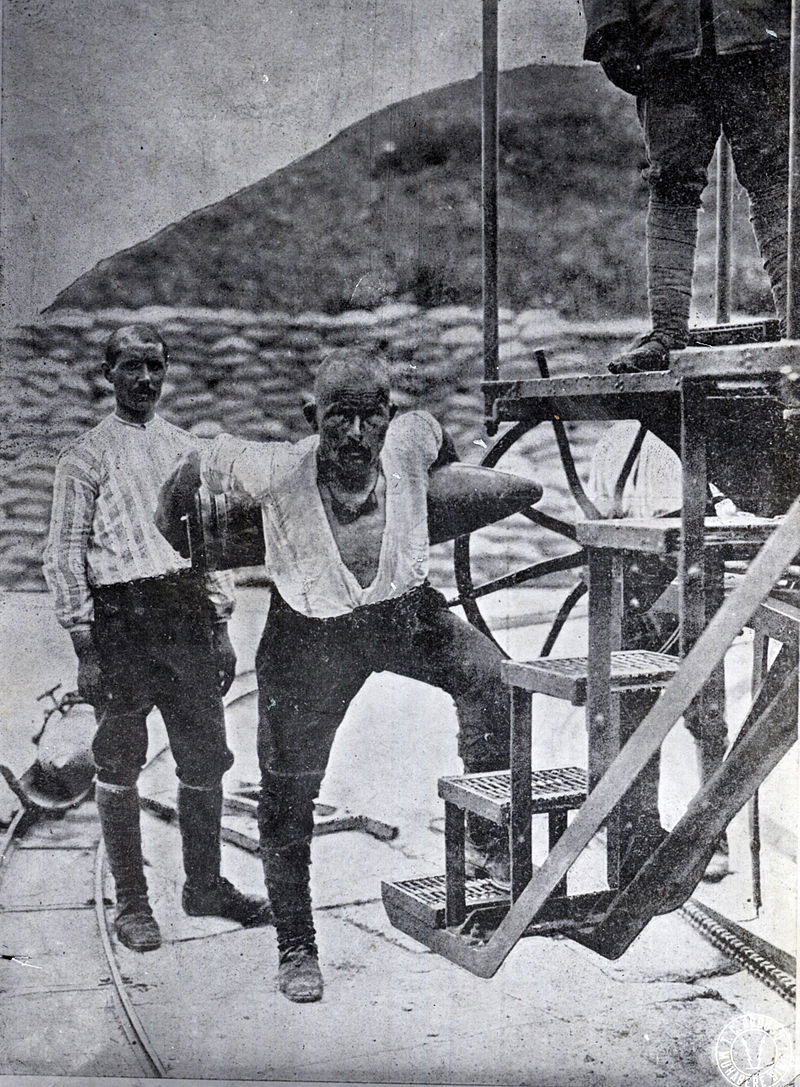
He did some slight damage to HMS Ocean in the first two shots, but heavily damaged on his third shot. The gun shot hit the bottom of the waterline, causing the ship to tilt.
Visit of the Dardanelles
You will witness here the magnitude of the battle of the dardanelles.
The Battle of the Dardanelles, also known as the Battle of Gallipoli, is a World War I clash that pitted the Ottoman Empire against British and French troops in the Gallipoli Peninsula from March 18, 1915 to January 9, 1916.
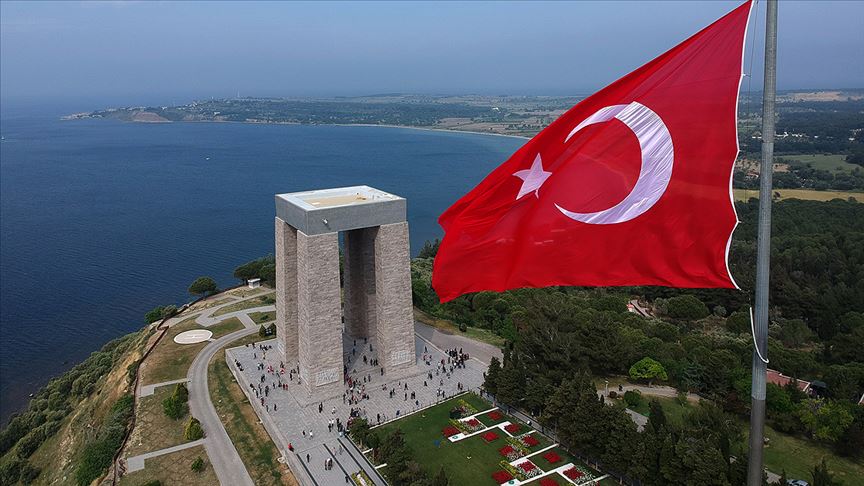
The Gallipoli Peninsula forms the northern part of the Dardanelles Strait connecting the Aegean Sea to the Sea of Marmara. During the First World War, this region was controlled by the Ottoman Empire then at war against the Allied powers including the United Kingdom, France and Russia.
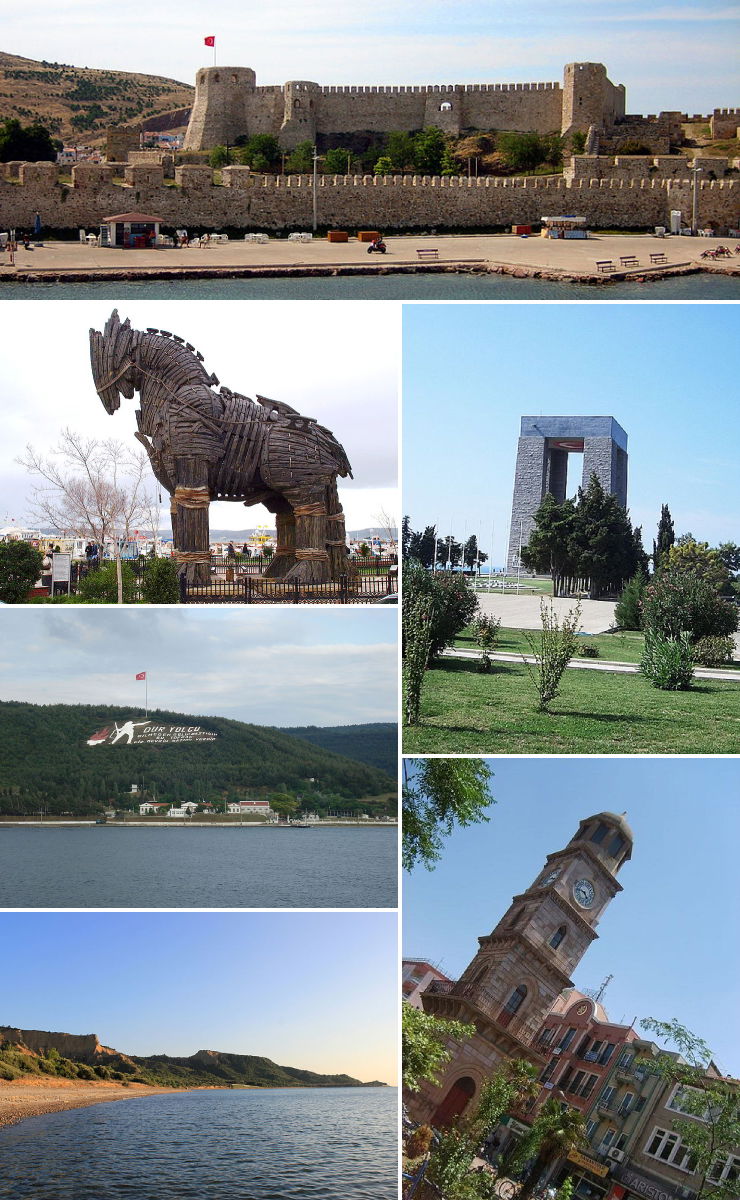
Free time and overnight at the hotel in Çanakkale
Day 11 : ÇANAKKALE / GALLİPOLİ / EDİRNE
Breakfast at the hotel
- Visit Kilitbahir Castle : is a fortress on the west side of the Dardanelles, opposite the city of Çanakkale, where there is a corresponding fortress (Kale-i Sultaniye), from which Çanakkale takes its name. The two castles were constructed by Fatih Sultan Mehmet in 1463 to control the straits at their narrowest point. Kilitbahir's name, meaning "lock of the sea", reflects this defensive purpose.
 On the way to Gallipoli
On the way to Gallipoli
Namazgah (Azaplar Mosque)
Namazgâh, an open-air mosque in Fener Square, was built in 1407 by Hacı Paşaoğlu İskender Bey. It is assumed that the soldiers pray here en masse when they go on an expedition. Even today the place is used as places of worship and prayers for passers-by.
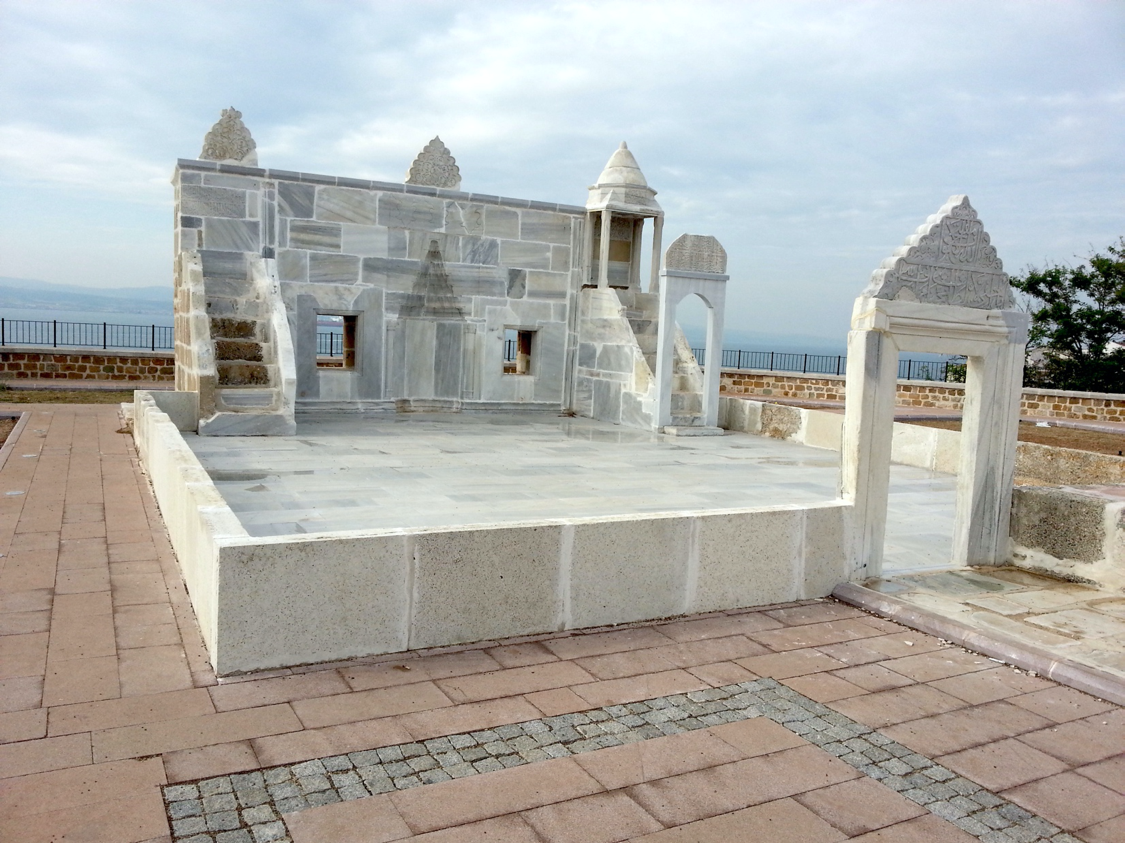
Flag Baba Tomb :
Karacabey who sacrificed his life not to hand over his flag to the enemy after his friends were attacked by Allied force in Gallipoli.
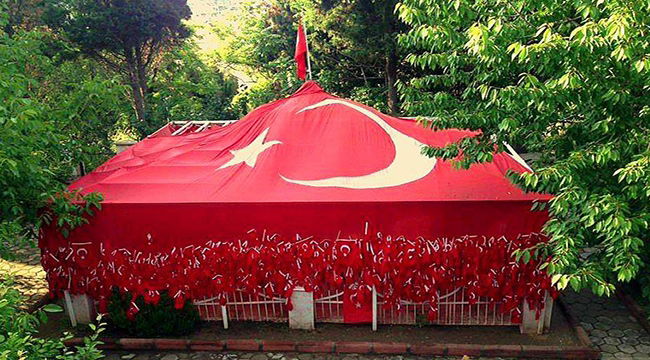
On the way to Edirne
Arrival to EDİRNE and Night hotel
Day 12 : EDİRNE
Breakfast at the hotel
Founded in 125 AD by the Roman Emperor Hadrian on the borders of Thrace, ancient Adrianople was conquered by the Bulgarians, then by the Crusaders, before Sultan Murat I seized it in 1361. Edirne was the second capital city after Bursa.
This short capital period (88 years) was left behind a lot of mosques, hamams (baths), bridges, covered bazaars, towers...etc. Now, Edirne is a border city and located the meeting point of the Tunca, Arda and Meric Rivers.
We will visit Selimiye Mosque, Old Mosque, Uc Serefeli Mosque and Tower Gate in the city center. Then we will go to Tunca River to see Beyazit Kulliye and Health Museum. After that, we finish our tour at Meric River and bridge.
Selimiye Mosque is the most impressive monument of Ottoman architecture style. It was built by Mimar Sinan who described this mosque as "This is the work of my mastership".
The highlight of any trip to Edirne is likely to be the Selimiye Mosque (Selimiye Cami). It’s another masterpiece designed by the renowned architect Mimar Sinan, who considered it his best work. The mosque has features typical of Mimar’s style and is considered a classic example of Ottoman period mosques. Its 4 minarets are the tallest minarets in Turkey and 2nd tallest in the world.
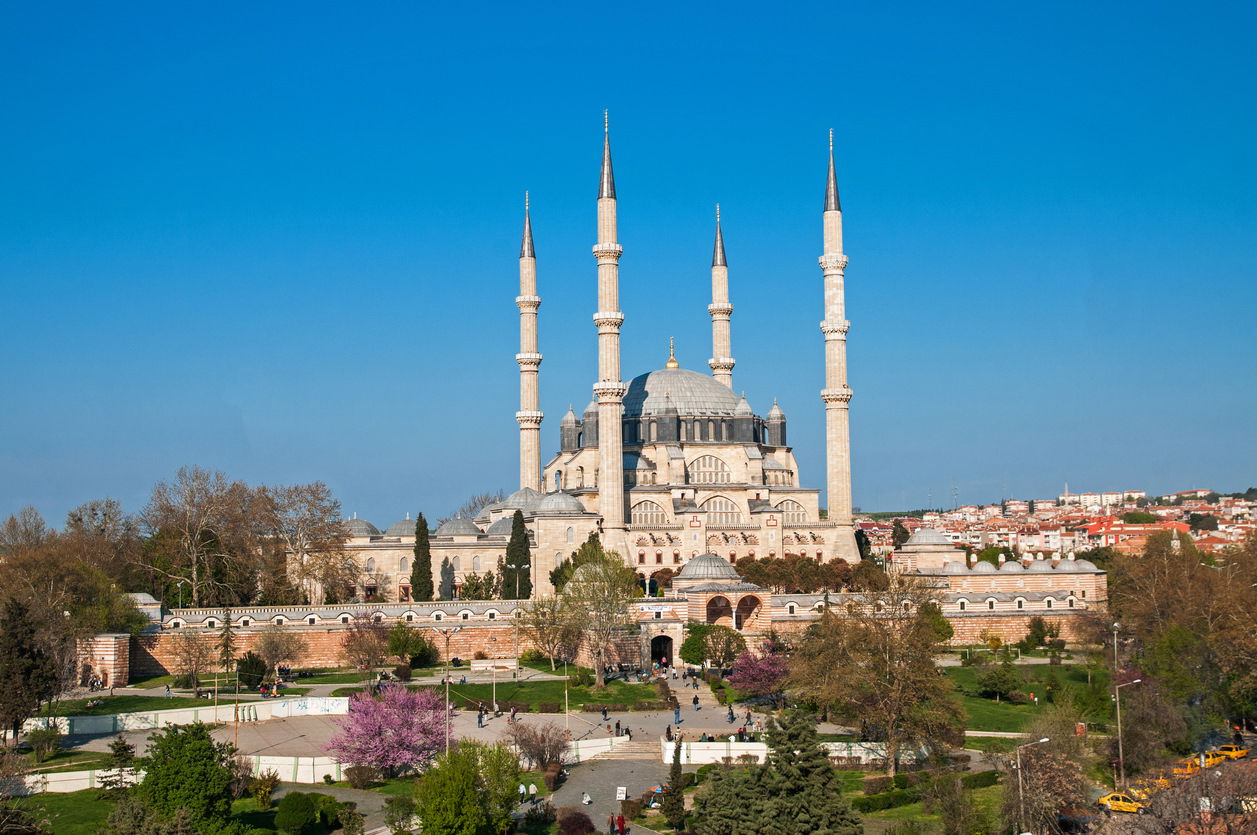
Today you can see a small amount of damage on the mosque’s dome. This is from Bulgarian artillery that hit it during the siege of Edirne. Apparently, upon Atatürk’s orders, it has never been restored to serve as a warning.
Eski (Old) Mosque the oldest mosque in Edirne, is famous with big works of calligraphy on its front side. The Old Mosque (Eski Cami) is the oldest mosque in Edirne, Turkey. It sits in the historic city center across from the Bedesten and near other historic mosques.
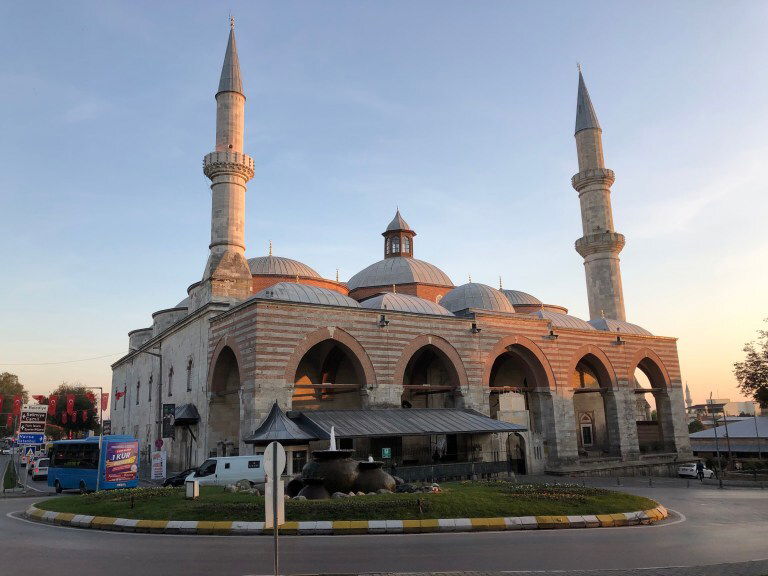
The Old Mosque was built between 1402 and 1414. It was commissioned by Emir Süleyman (1377-1411), the son of Sultan Bayezid I and one of the claimants to the throne during the Ottoman Interregnum. The mosque was finished by his brother, Sultan Mehmed I.
Uc Serefeli Mosque is second biggest mosque after Selimiye, the name means "tree balconied mosque".
The construction of the mosque was ordered by the Ottoman Sultan Murad II. It is strategically located in the heart of the historic center of the city, near the bazaar and other large religious buildings, such as the Old Mosque of Edirne.
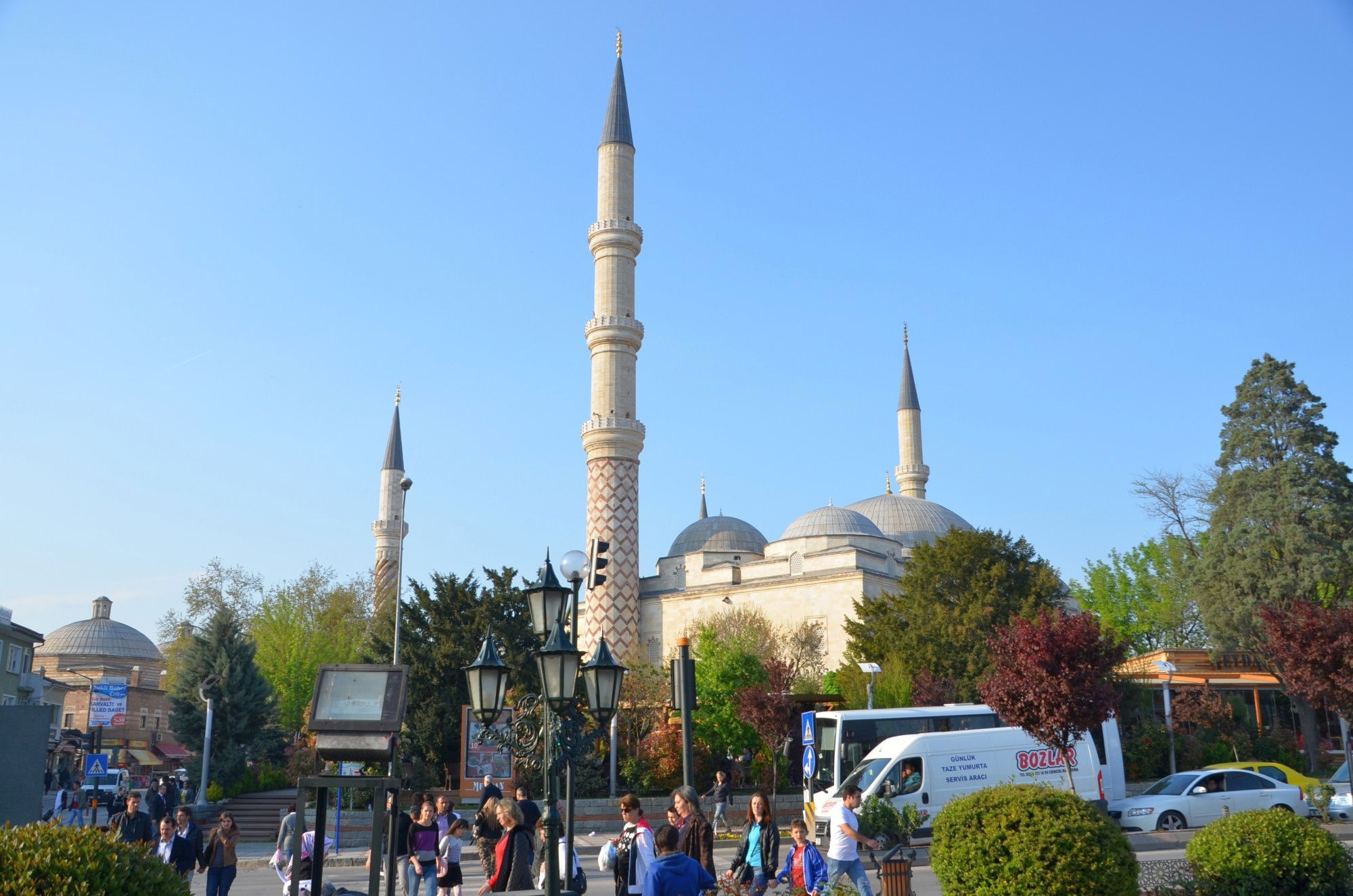
Its name refers to the fact that the minaret which is located near the main entrance on the southwest side has three balconies (in Turkish: üç şerefeli).
Kule Kapisi (Tower Gate) is all that remains of the tower which once protected the principal gate of the citadel.It was rebuilt between 1118 and 1843 by John Comnenus II as part of his repair of the Hadrianic defensive system.
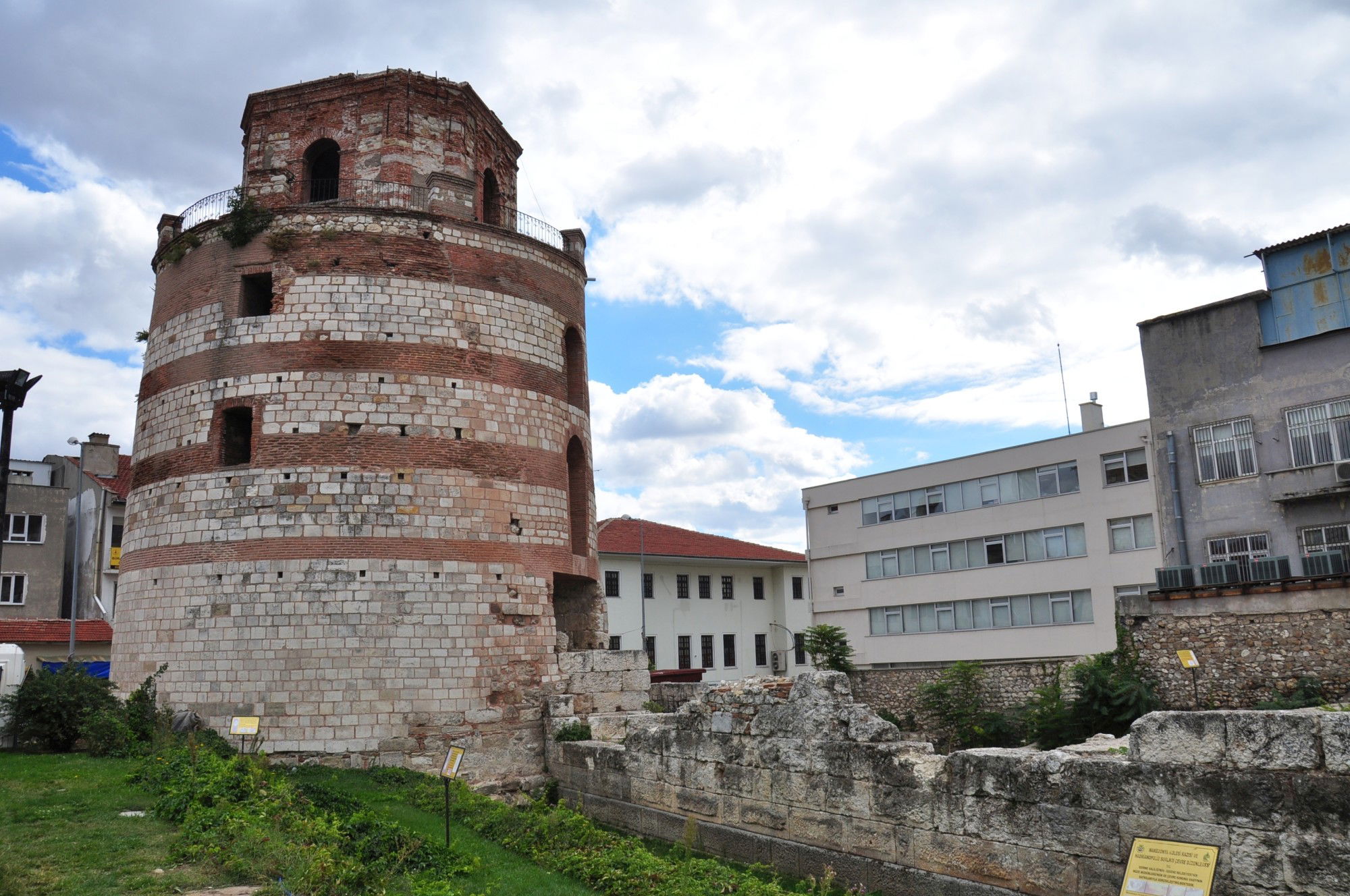
Tower Gate is also known as Makedonia Tower, Fire Tower, and Clock Tower. Actually, this monument was the one of four towers of Edirne Castle. Then it was converted into a clock tower which was burn by a fire.
Beyazit Kulliye and Health Museum is near the Tunca River, the largest Ottoman spiritual and physical welfare complex. There was a medical center, which is converted into a "Health Museum", in the complex. You can get to know the development of medical science (especially mental illness) of Ottoman.
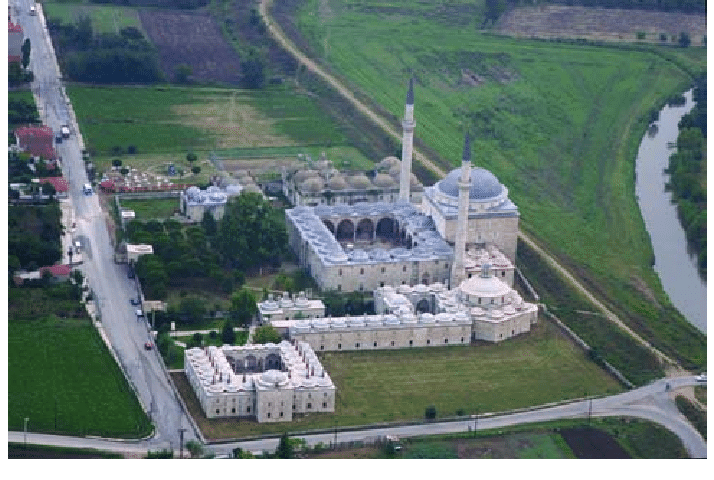
The Complex of Sultan Bayezid II (Turkish: Sultan II Bayezid Külliyesi) is a külliye located in Edirne, Turkey. It was built in 1488 by the Ottoman architect Mimar Hayruddin for the Sultan Bayezid II (reigned 1481–1512).
The complex contains a Dar al-Shifa (Turkish darüşşifa, "hospital, medical center"), and it remained in operation for four centuries from 1488 until the Russo-Turkish War (1877–78). The hospital was especially notable for its treatment methods for mental disorders, which included the use of music, water sound and scents.
Meric Bridge is 263 m lenght and connect between Karaagac village and the city center. It was built by Sultan Abdulmecit in 1842.
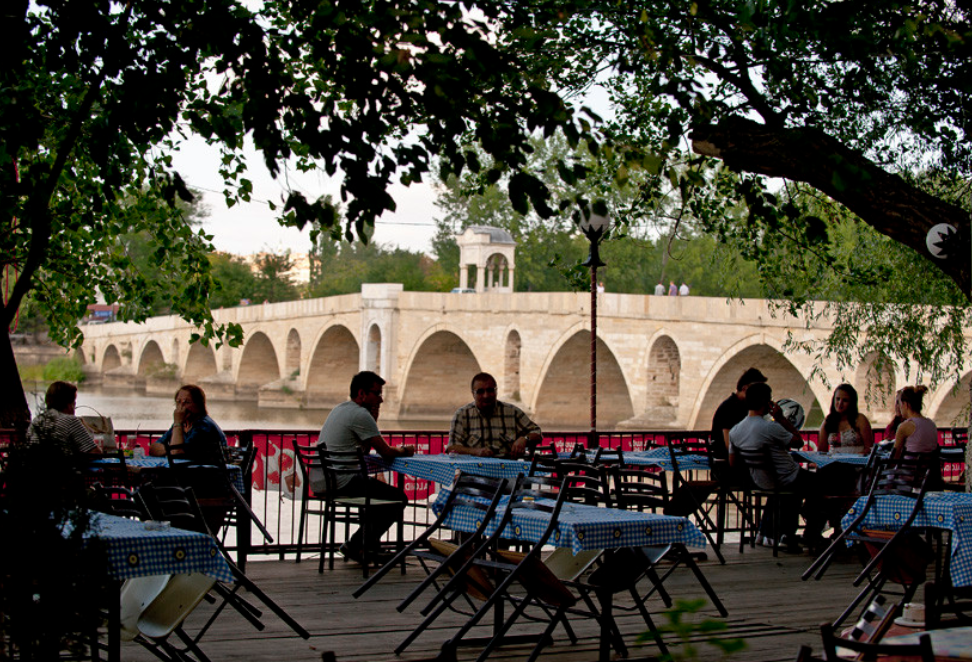
Free time and night at the hotel
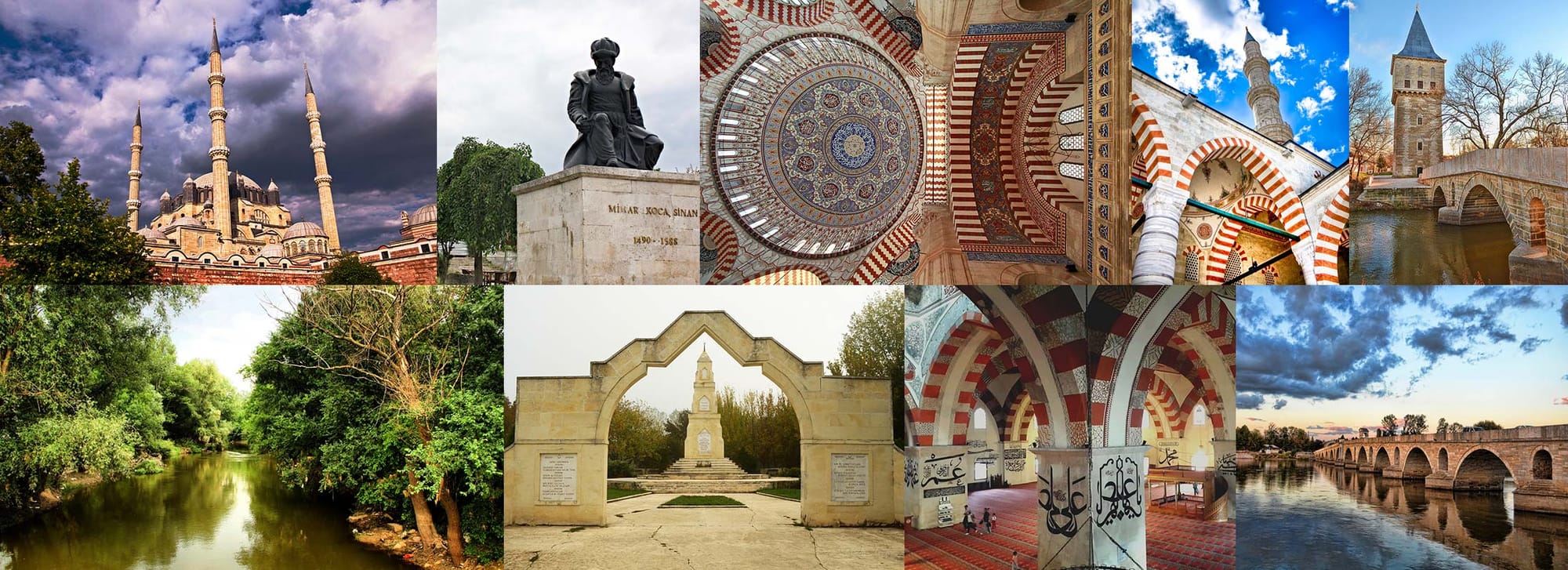
Day 13 : EDİRNE / ISTANBUL
Breakfast at the hotel
ALİ PASHA BAZAAR
Walk in Ali Pasha's covered bazaar, where you will get an idea, among other things, of the city's traditional activities: silk, linen, leather, tapestry, rose water, wax, garnet dyeing…
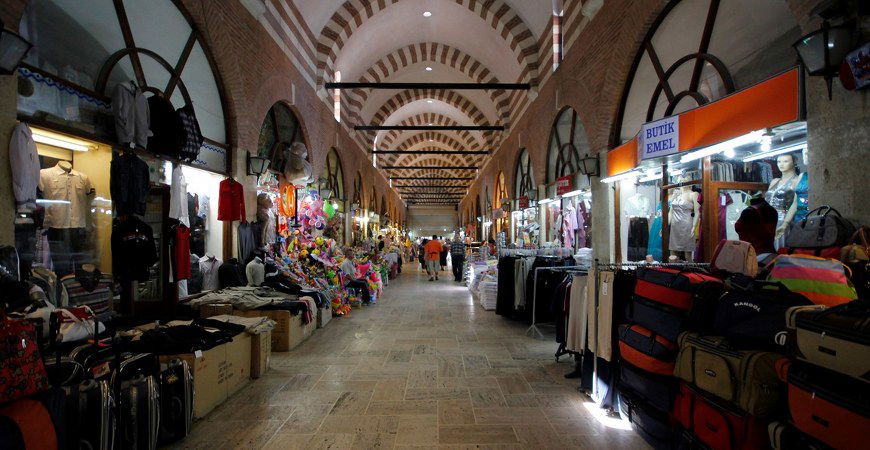
Turkish & Islamic Art Museum
The Edirne Turkish and Islamic Art Museum (Edirne Türk ve İslam Eserleri Müzesi) is located at the UNESCO World Heritage listed Selimiye Mosque in Edirne, Turkey. It displays important works of art as well as some historical and ethnographic items.
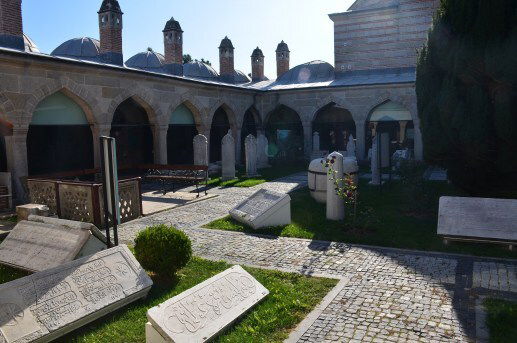
The small rooms of the elegant darül Hadis (Hadith school) in the northeastern corner of the Selimiye Mosque's courtyard house an eclectic collection of Ottoman-era artefacts, including calligraphy, weaponry, glass, woodwork, ceramics, costumes and jewellery. Some of the rooms feature mannequins in ethnographic-style displays. The handsome Tekke Works Room displays Dervish-related Korans, prayer rugs and musical instruments.
Return to Istanbul. Arrival Hotel in Istanbul
Free time and night at the hotel
Day 14 :ISTANBUL / ANTALYA
Breakfast at the hotel
Departure for the airport : fly to Antalya
PRICE INCLUDES:
* Hotel pick up-drop off
* Hotel with half board (Only breakfast at the hotel is included )
* Guidance
* Entrance fees
Excluded
* Flight tickets (International & National)
* All meals and drinks are not included.Only breakfast at the hotel is included
Important information
Passport or ID required.
This tour is a long day(s) that involves a lot of walking, so it may not be suitable for people with limited mobility or children.
Over several days we establish a package as you wish
All our visits are subject to conditions of possibilities.
This excursion is completely flexible according to the possibilities.
Please note that we can completely change the tour itinerary to meet your personal interests.
Get the personalized experience of a private tour Customize the itinerary to suit your personal interests
These proposals are a la carte and flexible according to the possibilities.
Prices will be provided on your choice
Please note that all times are approximate and subject to change.
The Guide may make corrections and adaptations in the course of the tour program according to the conditions and situations of the planned places of visits
Are you looking for a different Turkey tour?
Please check our other Turkey Tours for inspiration or send us an E-MAIL with details of your dream Turkey trip such as your ages, hotel preferences, personal interests and travel type.
We will get back to you with a suitable itinerary.
Contact us to get a personalized day by day itinerary for your trip to Turkey.
Benefit from our expertise.
We offer tailor-made tours to Turkey for all interests and desires, from romantic honeymoons and scenic self-drive road trips to photo tours with experienced photographers and cultural tours in major destinations.
We arrange everything for your turkey tours , including hotel bookings, airport transfers, guided tours, and top-notch experiences.
We want you to have a great time in Turkey and make sure your trip is a memorable one as we have escorted so many tours in Turkey personally.
At your request, we can take care of all the procedures relating to reservations (hotel, car, etc.), transfers (airport-hotel) and other additional services depending on the type of stay chosen.
For more information or reservation please contact us by mail or WhatsAap
- Antalya, Turkey
 +90-5385823609 - ENG -TR - FR
+90-5385823609 - ENG -TR - FR +90-5435384606 - NL / FL - DE - ENG
+90-5435384606 - NL / FL - DE - ENG- medical.travel.turkey@hotmail.com
